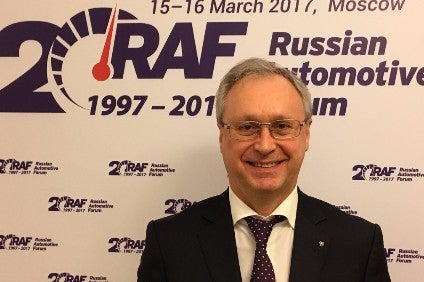
GAZ Group says it has set itself a target of increasing export markets to 51 countries as, in common with many Russian manufacturers operating in difficult domestic conditions, it looks overseas to soak up the shortfall.
The Kremlin – in the form of the the Russian Export Centre – is backing its home-grown automotive companies in their bid to sell abroad – particularly given the relative attractiveness for exporters of a depreciating ruble – through the guise of Decree 905 and its provisions of a US$345m fund.

Discover B2B Marketing That Performs
Combine business intelligence and editorial excellence to reach engaged professionals across 36 leading media platforms.
GAZ is one of 16 companies – notably including AvtoVAZ and Kamaz – to be supported by the Russian Export Centre and is looking to ramp up activity in that regard.
“Last year was not very successful [for exports] due to barriers in Kazakhstan [and] of course, Ukraine, but if you look on this issue from another point of view, we sell our product in 2016 to 46 countries, so this is 20% practically,” GAZ Group president, Vadim Sorokin told just-auto on the sidelines of this week’s Russian Automotive Forum organised by Adam Smith Conferences in Moscow.
“We use this time to improve our potential. Of course it is not a secret our customers…and the country deeply depend on the cost of resources. If oil and gas [prices] increase, we will get additional benefits because we create additional potential [as] we increase the number of customers.
“In 2017, our goal is to sell to 51 countries. It is not 52, it is not 50, it is 51. It is real customers, real partners, working and testing our product in the process of homologation.”
“In 2017, our goal is to sell to 51 countries. It is not 52, it is not 50, it is 51. It is real customers, real partners, working and testing our product in the process of homologation.”
The GAZ head backed the ‘Made in Russia’ initiative to raise the image of domestic products overseas but pointed to historical markets for the automaker such as Vietnam, where some of its products dating back to the 1970s, are still on the road, as well as Cuba.
“Some countries [are] very positive about [the] Gaz brand due to positive experience of our Ural truck which is probably the most reliable and most successful offer,” added Sorokin, who noted, however, Europe remained extremely challenging to break into.
“Europe definitely not, but this is not goal number one,” he said.”
GAZ’s place in Russian manufacturing history was cemented late last year as the automaker celebrated the 100th anniversary of its Avtodiesel Yaroslavl Motor Plant, making engines, gearboxes, clutches and stationary generator sets.
Yaroslavl engines are used in trucks, buses, tractors, grain harvesters, construction machinery as well as generator sets.
The GAZ president added around 60%-70% of the vehicles used in last year’s Victory Day Parade in Moscow were equipped with engines from the automaker.






